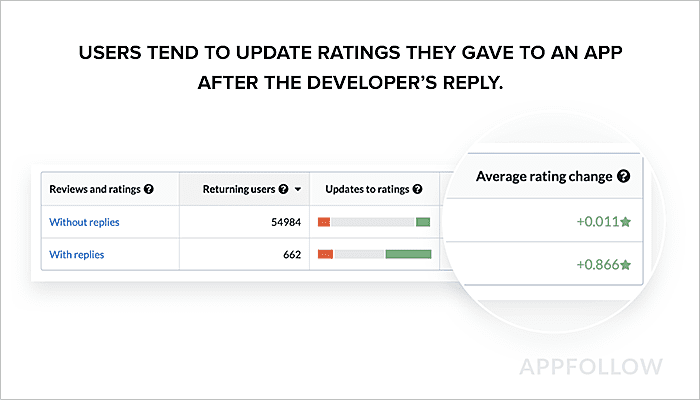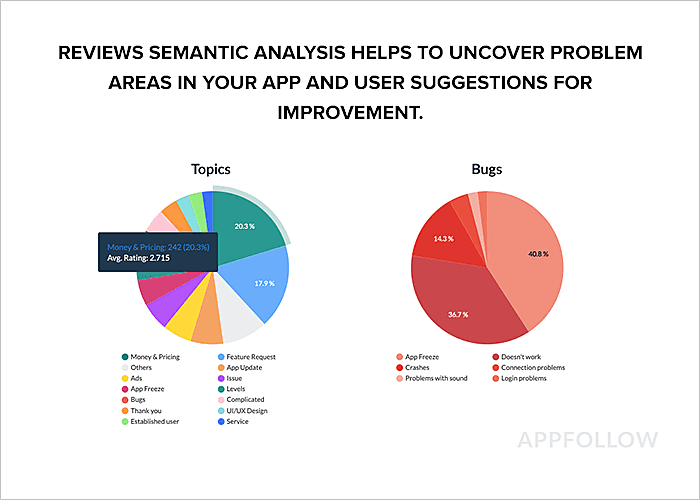
No matter how hard you work on perfecting your app, there is going to come a time when you receive some negative feedback. What would be your first instinct if you received a 1-star review that ripped your app to shreds? What about a 2-star with some constructive criticism?
If you are among those individuals who jump into the panic mode on witnessing the 1-star review first, then you’re not alone.
When scathing reviews come in, many developers move to “fight or flight mode,” ultimately choosing to fight by immediately responding to the user. Those so-so reviews are put on the back burner for supposedly higher priority reviews.
However, it’s in your best interest to take a step back before you engage. Think about it. How likely is it that you can convince someone so upset with your app experience that they left a 1-star review to re-engage with your app again?
Now, what about that user who left solid feedback? Which one is more likely to stick around? Clearly, your odds are best with the 3-star reviewer.
Of course, that doesn’t mean that you should ignore 1-star reviews altogether. Just prioritizing is not enough as the customer retention solution, working on the concrete information about bugs, crashes, and UX problems will improve user retention.
The Connection Between User Reviews and Retention
Don’t worry if you’re struggling to see the connection between user reviews and retention. We often associate retention with elements such as push notifications, onboarding, design, and more.
However, there’s an obvious benefit of reviews that sometimes gets forgotten about: feedback. Nowhere else can you get such valuable insights from your users than reviews.
Your app was (hopefully) designed with your users in mind. While you likely understand your users well, there is always more to learn. You’ll also get insights into the distinct types of people who use your app, which can be leveraged to create marketing personas. If you are finding ways to improve retention and user experience, it’s critical to integrate the suggestions and thoughts of your user base.
A Word on Rankings
Poor reviews and ratings can cause your app’s ranking to drop. Lower rankings make it harder for new users to find your app. Even if you have thousands of stellar reviews, you’ll still need to manage those that are less than perfect.
If a potential user stumbles upon your app in the charts and comes across the recent negative reviews with no response, they may be too turned off to download your app.
Therefore, reverting to negative feedback is a must to get along with the ranking of the app.
Why Ask for Feedback?
It’s human nature to desire to be heard. Your users are no different. While it’s great to receive reviews, it’s even better to establish two-way communication with your audience.
Reviews are an excellent place to begin. If you can bake requests for reviews into strategic push notifications and smart in-app messaging, you’ll see even better results.
By reading, responding to, and learning from reviews, you’ll show your users you care and their feedback matters. As others see that you take reviews seriously, and thus, you’ll increase their trust in your app and gain respect. This simple strategy is ideal for:
- Retention
- Loyalty
- Satisfaction

Source: appfollow.io
When to Ask for Feedback
Want more feedback? Ask for it. It seems pretty simple, right?
The key is to know when to ask for feedback. Just as you wouldn’t disrupt a colleague on a tight deadline to chat about your weekend, you shouldn’t interrupt your user’s flow in the app to ask for a review.
If you ask for a review at the wrong moment, you risk the user ignoring the attention or user being so annoyed that they leave a negative one.
The best time to ask for a review depends on the mechanics of the app. It’s best to make the request after a user has achieved a goal or completed a task. This is typically when the user will be most pleased with their experience and open to sharing feedback.
Types of High Priority Review for User Retention
Every app needs user review and the following are the various types of reviews that can help you gain better user-retention rates:
1. Detailed Reviews
Detailed reviews are a goldmine for developers. When you see reviews with lengthy descriptions, you and your team should be ready to take in insights and ideas.
You’ll often find that 2 and 4-star reviews contain the most details, especially for games. But how you manage the countless reviews that come in each day?
Here are some suggestions:
- Avoid generic, canned responses. These responses make users feel ignored and unheard of.
- Do more than saying “thanks.” Let them know you appreciate their feedback as well as the steps you’ll take to include it.
- Tag reviews with specific requests for features or comments about bugs.
- Update your responses when you’ve added a request feature or resolved an error.
- Use reviewer names for a more personal touch.
- Only respond to negative reviews when you can communicate clearly and calmly. Even if you’re in the right, other users are quick to turn their backs on developers who “talk back.”
Source: The App Store
2. Reviews with Trending Problems or Comments
Most apps will receive reviews that contain trends, which can be analyzed and integrated into your user retention strategy. By trends, we mean frequent comments, remarks, and requests.
Typically these trends will include comments on bugs and crashes, feature requests, problem ads, and localized issues. Depending on the type of app you have, you may also receive comments regarding design, workflow, layout, etc.
By grouping these reviews, you can uncover problem areas in your app and user suggestions for improvement. Doing so will also allow you to address the reviews in quick succession. Your responses will also encourage users to update their reviews as time goes on.

Source: appfollow.io
3. Updated Reviews
Getting people to review is hard enough. But to come back and offer additional feedback after an update, new feature release, etc.? Those are certainly high-priority users.
Of course, updates can go 1 or 2 ways: positive or negative. If you see a 2-star review jump to a 5-star after addressing bugs, that’s a fantastic sign that you’re heading in the right direction. If you suddenly notice 4 and 5-star reviews plummeting to 1’s and 2’s, take note. Something is up in your user experience and needs to be corrected before the uninstalls start coming in waves.

Source: appfollow.io
4. Almost 5-Stars
These are the reviews that crush even the most experienced developers. The review is all positive until the user points out an aspect of their experience that caused you to miss out on receiving a 5-star rating.
While these reviews are no fun to read, they are some of the most important ones you’ll receive. Even if the issue only resulted in a 4-star rather than 5-star rating, make it a priority to track and solve that issue.
With so many apps being released each day, having an excellent user experience is the best way to differentiate yourself. Pay special attention to these reviews so you can make your app the very best of the best and keep your users around for the long haul.
Conclusion
Feedback is a gift. Instead of thinking of reviews as merely a way to increase rankings, view them as critical to your overall user experience. These insights must be carefully integrated into any retention rate marketing and product strategies for your app. After all, when your users speak, it’s best to listen.
We hope, we have answered your question on ‘How to improve retention’ by making the most out of the user reviews. If you are still stuck somewhere, you can comment below and our experts will answer all your queries.

Content Writer
Sakshi Kaushik is a wordsmith extraordinaire who transforms complex technical jargon into captivating, must-read articles. Armed with a Masters in Economics, Sakshi dissects intricate topics with the precision of a seasoned expert. Her insights have graced prestigious platforms like Hackernoon, Ecowiser, and Medium, captivating readers and tech aficionados alike. With a career spanning influential companies like Teleperformance, Finex, and SparxIT Solutions, Sakshi is well-versed in navigating both the keyboard and the boardroom.
In addition to her extensive experience, Sakshi holds HubSpot certifications in Digital Advertising and Content Marketing, and has earned further credentials from UpGrad, Coursera, and Great Learning. Dedicated to sharing her expertise with mobile app developers and tech enthusiasts, Sakshi's passion shines through her writing. When she's not crafting compelling content, she enjoys diving into thrilling novels and exploring diverse worlds.














